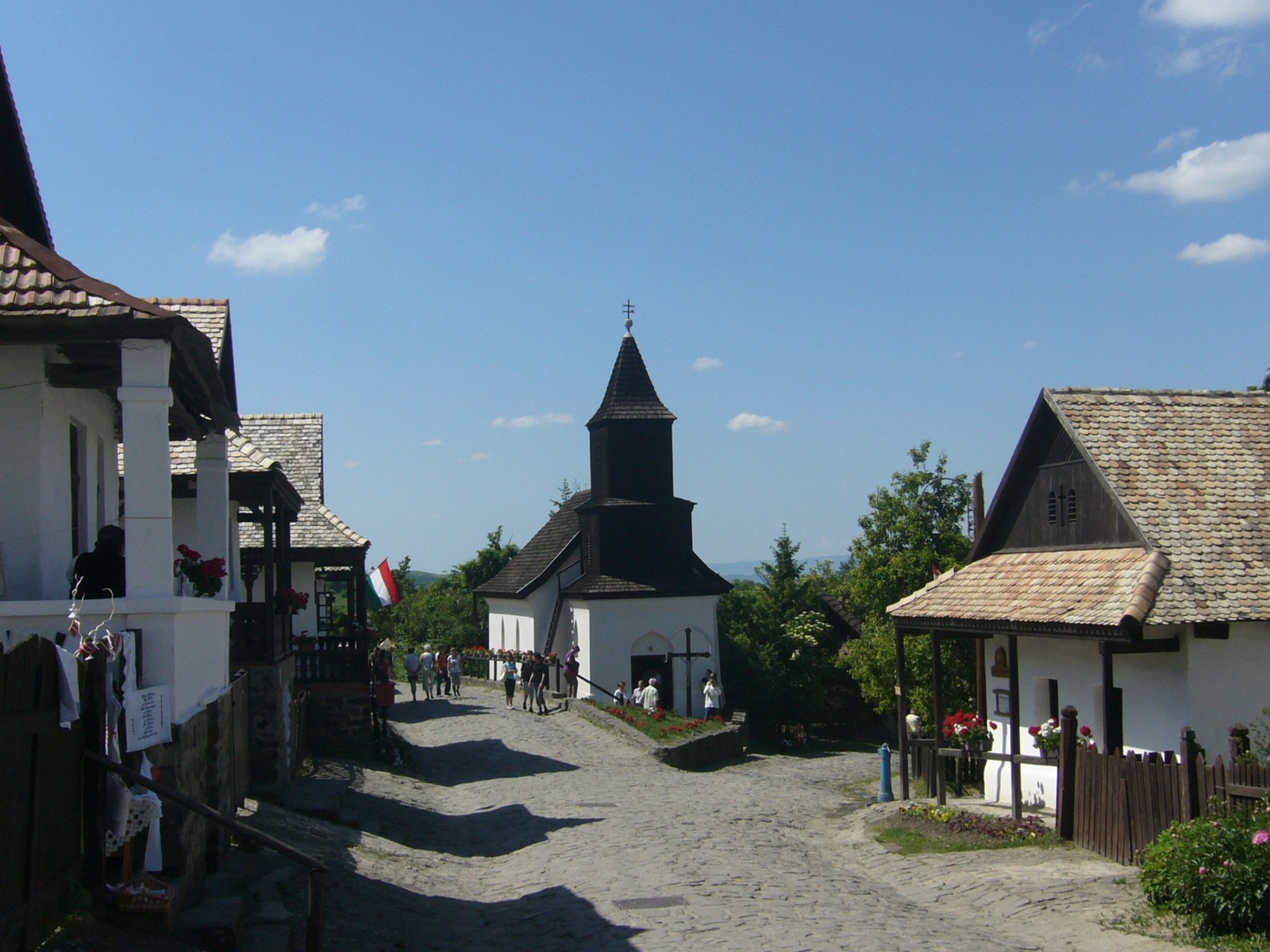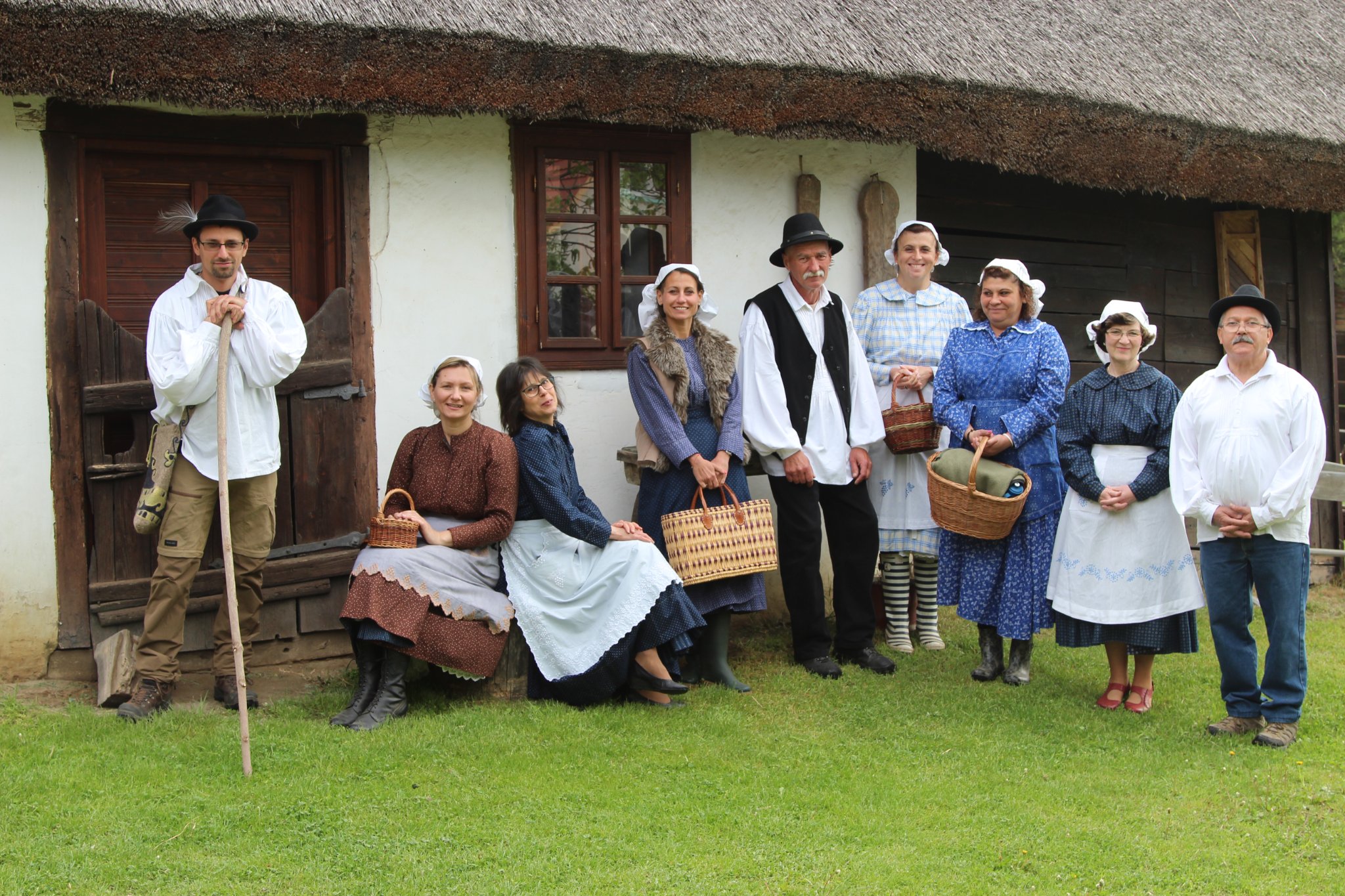ICME 2023 Post-conference tour
ICME 2023 ANNUAL CONFERENCE
Eastern & Southern Trip Hungary, December 06-07, 2023
The post-conference tour is planned over two days (6th and 7th of December) and participants will be able to attend one or both days. The cost is 150 € per day including the bus, lunch, museums and other expenses. The tour can be registered separately and paid for individually. A detailed tour description can be found below. The registration deadline for the post-conference tour is November 15th 2023 .
DAY 1 – December 6, 2022 – Eastern Trip / Hollókő-Mezőkövesd-Tokaj

Hollókő
Anyone who has once visited this Hungarian fairytale-like landscape will never forget it. It is no coincidence that the beautiful Palóc region and its idyllic village became part of the World Heritage in 1987. The UNESCO recognizes the 67 protected houses of the Old Village. Not only was it the first Hungarian participant to be listed, but also the world’s first village to earn this title.
The main street of the village is lined with characteristic white, arcaded, board-fenced, traditional Palóc peasant houses. After the fire in 1909, they acquired their present unified form, and fortunately, for over a hundred years, the village’s appearance has remained almost unchanged. Most of the houses under monument protection now serve tourism purposes. Visitors can enter many of them, see various exhibitions, participate in handicraft workshops, and some of them also function as restaurants where you can taste the delights of Palóc cuisine. You can even stay in a few houses that have been converted for rural tourism purposes. The December opening requires separate arrangements.
Mezőkövesd
Mezőkövesd, the capital of the Matyó people, is located at the meeting point of the Bükk Mountains and the Great Hungarian Plain. The most interesting part of Mezőkövesd is the neighborhood called Hadas, which represents the embodied Matyó world with its folk heritage houses and winding little streets.
The living open-air museum showcases houses that are 100-150 years old, serving as ethnographic and creative houses. They present the architecture, way of life, and folk art of the Matyó people, making it the authentic venue of living Matyó folk art in the neighborhood. Visitors can learn about reed weaving, furniture painting, weaving, embroidery, gingerbread making, enameling, pottery, glass grinding traditions, as well as acquire many lovely gift items and souvenirs. They can also enjoy colorful and lively traditional events and programs. The small plots, irregular streets, whitewashed, thatched-roof peasant houses evoke the former lifestyle of the market town.
Matyó or Matyóság is the collective term for the ethnographic group that emerged in the 18th-19th centuries in the historic market-town of Mezőkövesd at the juncture of the lowland Great Plain and the mountainous highlands in east-central Hungary. Locally, the inhabitants of neighboring Tard and Szentistván villages, as well as settlements at the foot of the Bükk Mountains, are also considered Matyós. However, there are considerable cultural differences, and the true Matyó cultural identity has always been associated with Mezőkövesd. The residents of all three communities identify with Matyó heritage and incorporate numerous elements of it into their daily lives and celebrations. Matyó folk art, with its unique style, developed as a result of traditional folk culture, social structure, and way of life, which is reflected in the layout of the settlement. It gained widespread popularity as an emblematic expression of Hungarian identity during the formulation of the Hungarian national cultural identity in the late 19th and early 20th centuries. Matyó folk heritage, including folk art, religious traditions, celebrations, rituals, traditional crafts and trades, folk dance, songs, music,
poetry, and dialect, remains a living part of the community’s life and culture. Matyó culture is not a static heritage but a constantly evolving and recreated one that contributes to the identity of successive generations.
Tokaj
Located at the foothills of the Zemplén Mountains (in North-East Hungary), along the Bodrog river and at the confluence of the Bodrog and the Tisza Rivers, the Tokaj Wine Region Historic Cultural Landscape was inscribed on the World Heritage List in 2002. The World Heritage property and its buffer zone together cover the administrative area of 27 settlements (13,245 ha and 74,879 ha, so 88,124 ha in total). The entire landscape, its organisation and its character are specially shaped in interaction with the millennial and still living tradition of wine production. Documented history of the wine region since 1561 attests that grape cultivation as well as the making of the ‘aszú’ wine has been permanent for centuries in the area surrounded by the three Sátor-hegy (the Tokaj-hill, the Sátor – hill of Abaújszántó, and the Sátor-hill of Sátoraljaújhely). The legal base of delimitation of the wine region is among the first in the world and dates back to 1737 when the decree of Emperor Charles VI (Charles III, King of Hungary) established the area as a closed wine region.
The unique combination of topographic, environmental and climatic conditions of the Tokaj Wine Region, with its volcanic slopes, wetlands creating a special microclimate that favours the apparition of the “noble rote” (Botrytis cinerea), as well as the surrounding oak-woods have long been recognized as outstandingly favourable for grape cultivation and specialized wine production. All these features have enabled the development of vineyards, farms, villages, small towns and historic networks of wine cellars carved by hand into mostly volcanic rocks, which are the most characteristic structures in Tokaj: that of King Kalman in Tarcal is known to have been in existence as early as 1110. There are two basic types of cellar in Tokaj: the vaulted and the excavated. The socio-cultural, ethnic and religious diversity of the inhabitants, together with the special fame of the Tokaji Aszú Wine has contributed to the rich and diverse cultural heritage of the region.
DAY 2 – December 7, 2022 – Southern Trip / Budapest – Mohács – Baja – Kalocsa – Ócsa – Budapest

Mohács
The busó [boosho] festivities at Mohács are an end-of-winter custom performed by persons in special masks as a ritual aiming to expel winter. It beings on the Thursday of Carnival week and goes on till Pancake Tuesday.
The main features are the busós – frightening-looking figures wearing wooden masks and big woolly cloaks. This line of events, now a festival of national renown, includes a parade accompanied by dance and music attracting the entire population of the city, the busó groups, the craftsmen/women who created the masks and other accessories as well as the musicians and dancers.
Organised events are a no lesser part of the process of the busó festivities than the gathering of the busós, such as the burning of a coffin which symbolises winter, the initiation of new busós, folk dance shows, handicraft fairs and exhibitions, as well as spontaneous actions and manifestations such as cross-gender games, ritual elements of fertility magic and scaring rituals.
The Kanizsai Dorottya Museum, enriched with the oldest masks of the Busójárás, showcases the culture of Mohács and its surroundings, as well as the South Slavic peoples of Hungary. The institution serves as the sole base museum for the Croatian, Serbian, and Slovenian minorities in Hungary and, as such, holds a national collecting authority.
The museum’s collection provides insights into the rich cultural heritage, traditions, and customs of the region’s diverse communities. It highlights the significance of the Busójárás festival, which is celebrated in Mohács and is known for its unique masks and folk traditions. Through exhibitions and displays, the museum aims to promote understanding and appreciation of the cultural diversity present in Hungary, particularly within the South Slavic communities.
The museum is currently undergoing renovations, and it is hoped that the new permanent exhibition will open by December. The renovation process aims to enhance the museum’s facilities, update exhibition spaces, and provide an improved experience for visitors. Once completed, the new permanent exhibition will showcase the cultural heritage of Mohács and its surrounding areas, as well as the traditions and customs of the South Slavic peoples in Hungary. Visitors can look forward to a revitalized museum that offers engaging displays and a deeper understanding of the region’s cultural diversity.
Kalocsa
Kalocsa, with its rich cultural heritage, offers a variety of museums and collections to explore. Visitors can enjoy the active work at the Paprika Museum and the porcelain manufacturing plant. Kalocsa’s Sárköz region has been one of the country’s most significant spice paprika cultivation areas since the early 1700s. The non-pungent spice paprika was developed in the late 1920s at the Kalocsa Paprika Experimental and Chemical Testing Station, established in 1917. It started its global journey from Kalocsa. In 2014, the Hungarian Heritage Committee included “Kalocsa writing-embroidery-painting” and ground paprika from Kalocsa in the Collection of Hungarian Heritage as Hungarikums. The colorful flower motifs of Kalocsa’s ornamental painting and embroidery are well-known worldwide and are often considered emblematic symbols of Hungarian folk art. This artistic expression has become a unique element of Kalocsa’s traditional peasant culture, as well as the surrounding villages of Drágszél, Homokmégy, Öregcsertő, Szakmár, and Újtelek, which were established in the 18th and 19th centuries.
Ócsa
Ócsai Tájház, located within the Ócsa Landscape Protection Area, is part of the old village of Ócsa. The center of the settlement has preserved its original structure, old-style houses, a centuries-old Árpád- era church, and living folk traditions. In addition to natural values, it presents cultural, religious, historical, and ethnographic values to visitors. The 13th-century Romanesque-style basilica with three aisles and a cruciform plan, along with the ethnographic complex reminiscent of the 18th century, invites visitors on a true journey through time. Through the museum’s programs, visitors have the opportunity to gain a comprehensive understanding of local ethnographic traditions and the natural values of the Landscape Protection Area. Throughout the year, the museum presents seasonal events and highlights related to significant days, providing a continuous showcase of the region’s cultural and natural heritage.